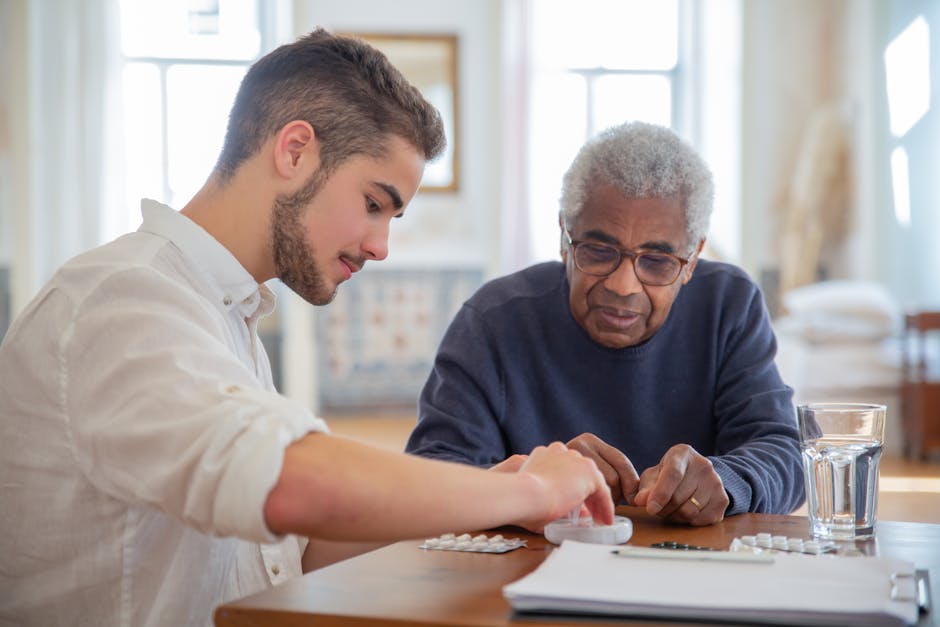Culturally Sensitive Care: Addressing Diversity In Advance Decisions And ADRTs
Navigating the intricate tapestry of cultural diversity in healthcare can often feel like walking a tightrope, as each patient comes with their unique background and beliefs. As a healthcare provider, it’s essential to be culturally competent and sensitive when discussing end-of-life preferences and advance decisions with patients.
By understanding their cultural perspectives, you’ll not only build trust but also ensure that their wishes are respected during difficult times.
In this article, we will explore how to approach these conversations with empathy and inclusivity. We will delve into strategies for addressing cultural differences in end-of-life care while incorporating these perspectives into Advance Decision Documents (ADRTs).
You hold the power to make a genuine difference in your patients’ lives by fostering open communication that respects their values and beliefs. So let us embark on this journey together towards providing compassionate care that transcends borders of culture and tradition.
Key Takeaways
- Cultural competency is essential in healthcare to provide the best care possible and bridge cultural gaps.
- Incorporating cultural perspectives into advance decision documents is necessary for creating a more inclusive and personalised approach to end-of-life care.
- Encouraging open dialog and providing culturally sensitive resources are important in understanding patients’ unique needs and promoting patient empowerment and trust-building within the healthcare setting.
- A supportive environment, empathy, and inclusion are crucial in enabling patients to make informed decisions based on their personal beliefs and values without fear of judgement or misunderstanding from healthcare professionals.
The Importance of Cultural Competency in Healthcare

It’s crucial to understand that cultural competency in healthcare isn’t just a nice-to-have, it’s an essential tool for providing the best care possible. As a healthcare professional, you have the opportunity and responsibility to bridge cultural gaps, ensuring that all patients receive equal treatment and understanding.
Cultural barriers can lead to misunderstandings between healthcare providers and patients, ultimately resulting in poorer health outcomes and increased healthcare disparities. By embracing cultural sensitivity and respecting diverse beliefs, values, and traditions, you’ll be better equipped to provide effective and compassionate care.
Developing your cultural competency skills not only helps your patients but also contributes to creating an inclusive environment where everyone feels valued. You’ll find that being able to communicate effectively with people from different backgrounds enhances trust between you and your patients.
This heightened level of trust is essential when discussing sensitive topics such as advance decisions or Advance Decision Refusal Treatments (ADRTs). Additionally, being aware of potential biases or assumptions within yourself will enable you to approach each patient with an open mind and heart.
As you work towards becoming more culturally competent in healthcare, remember that this journey involves continuous learning about various cultures while also reflecting on your own biases or stereotypes. This ongoing process will empower you to address diversity in advance decisions more effectively by fostering open communication around end-of-life preferences with patients from all walks of life.
By doing so, you’re not only respecting their wishes but also demonstrating genuine empathy – a quality that truly makes a difference when caring for others.
Stay tuned for the next section where we explore how discussing end-of-life preferences with patients plays a vital role in culturally sensitive care.
Discussing End-of-Life Preferences with Patients

Navigating the delicate waters of end-of-life preferences can be like treading on eggshells, yet being open and empathetic with your patients will lead to more meaningful conversations. As a healthcare professional, it’s important to acknowledge that discussing death and dying may be uncomfortable for some individuals due to cultural or personal reasons.
End-of-life tabus vary from culture to culture, making it essential for you to approach these conversations with sensitivity and respect for diverse customs. One way to create an open dialog about end-of-life preferences is by asking open-ended questions and actively listening without judgement. This allows your patient to feel heard and respected while giving them space to share their thoughts at their own pace.
By providing an environment where individuals feel safe expressing themselves, you’re fostering trust between yourself and your patient – a vital component in any healthcare relationship. Remember that there may be topics or perspectives unique to different cultures; thus, showing genuine curiosity about what matters most to them demonstrates your commitment not only as a provider but also as someone who values their beliefs.
As you continue engaging in these difficult yet necessary discussions, consider researching strategies for navigating cultural differences within the context of end-of-life care planning. By developing this skillset, you’ll become better equipped not only in connecting with diverse populations but also in understanding how best to support them through the complex decision-making process surrounding advance decisions and ADRTs.
This knowledge will empower you both professionally and personally as you strive towards providing culturally sensitive care that honours each individual’s unique background, needs, and desires.
Strategies for Navigating Cultural Differences

You’ll find that embracing and understanding cultural differences plays a crucial role in effectively communicating with your patients about their end-of-life preferences. Navigating these cultural barriers can be challenging, but doing so will not only lead to more productive conversations but also foster a deeper sense of trust and rapport between you and your patient.
By being aware of the various customs, beliefs, and communication styles associated with different cultures, you can better tailor your approach to discussing sensitive topics such as advance decisions and ADRTs. To help bridge any potential gaps in understanding or communication, it’s important to use inclusive language that respects each individual’s unique background and experience.
This might include asking open-ended questions that invite patients to share their thoughts on their own terms or using culturally appropriate analogies to explain complex medical concepts. Additionally, consider seeking input from colleagues who have expertise in working with diverse populations or consulting resources like cultural competency guides for healthcare professionals.
Remember that showing empathy, humility, and curiosity about your patient’s perspective is key when discussing end-of-life care options. As you work towards incorporating cultural perspectives into the conversation around advance decision documents, keep in mind that involving family members or trusted community leaders may be an invaluable resource for providing further insights into the patient’s values and preferences.
Encourage open dialog amongst all parties involved while maintaining a supportive environment where everyone feels heard and respected. This collaborative approach will not only enhance your ability to provide culturally sensitive care but also empower your patients to make informed choices regarding their end-of-life journey.
In the next section, we’ll explore how you can incorporate these insights into advance decision documents themselves for a truly patient-centred experience.
Incorporating Cultural Perspectives into Advance Decision Documents

Incorporating cultural perspectives into advance decision documents is essential, as you’re not only creating a more inclusive and personalised approach to end-of-life care, but also fostering trust and understanding between you and your patients.
Cultural considerations should be taken into account when draughting these documents, ensuring that the language used is respectful of different beliefs, values, and customs. This may involve adapting the document’s content or format to better suit the needs of diverse patient populations. By taking these steps, you are demonstrating your commitment to providing culturally sensitive care.
Document adaptation can involve several strategies such as using simple language for easy comprehension across various cultures or consulting with cultural experts to ensure accuracy in translation. Additionally, incorporating symbols or imagery that resonate with specific cultural groups can also help create a sense of familiarity and comfort for patients.
Remember that every culture has unique practises surrounding end-of-life decisions; therefore, being aware of these differences will allow you to accommodate individual preferences while maintaining a high standard of care.
As you continue to incorporate cultural perspectives into advance decision documents and adapt them accordingly, your efforts will contribute significantly towards enhancing patient trust and communication. Patients will feel understood and respected during vulnerable moments when they know their beliefs are being acknowledged.
This connexion fosters an environment where open dialog about important decisions becomes possible, ultimately leading to improved outcomes for all involved parties. In fact, by embracing this approach wholeheartedly in your practise, it paves the way for even stronger relationships with patients from diverse backgrounds moving forward.
Enhancing Patient Trust and Communication

By fostering an inclusive and personalised approach to end-of-life planning, you’re not only strengthening patient trust but also enhancing communication between healthcare providers and patients. This level of cultural sensitivity ensures that patients feel heard, respected, and empowered in their care journey.
By incorporating diverse perspectives into advance decision documents and ADRTs (Advance Decision to Refuse Treatment), you’re promoting patient empowerment and trust-building within the healthcare setting.
Encourage open dialog: Engage with your patients by asking about their beliefs, values, and preferences as they relate to medical care at the end of life. This’ll demonstrate your commitment to understanding their unique needs while building mutual respect.
Provide culturally sensitive resources: Offer materials that reflect the diversity of your patient population, ensuring that all individuals have access to information that’s relevant, accessible, and respectful of their backgrounds.
Collaborate with community partners: Reach out to local organisations or cultural leaders who can provide valuable insight into specific cultural practises or concerns related to end-of-life care.
In this way, you can continue creating a supportive environment for your patients where they feel safe expressing their desires for future medical treatment. Fostering a culture of empathy and inclusion is essential in enabling them to make informed decisions based on their personal beliefs and values without fear of judgement or misunderstanding from healthcare professionals.
By maintaining open lines of communication throughout this process, you’ll be better equipped to address any potential barriers or challenges that might arise due to cultural differences – ultimately paving the way for more compassionate end-of-life care for all individuals involved in your practise.
Frequently Asked Questions
What are the potential consequences of healthcare professionals not being culturally sensitive when addressing advance decisions and ADRTs?
If you don’t practise cultural competence, you risk misunderstanding patients’ spiritual beliefs, leading to inappropriate advance decisions and ADRTs. This could harm your relationship with patients, eroding their trust in your care.
How can healthcare providers ensure they are educated on various cultural beliefs and values related to end-of-life care?
Ahoy, compassionate soul! Embrace cultural training to understand diverse beliefs and values. Respectfully accommodate patients’ unique traditions in end-of-life care, fostering empathy, inclusion, and a genuine desire to serve others.
Are there any specific legal considerations to be aware of when incorporating cultural perspectives into advance decision documents?
When incorporating cultural perspectives, be mindful of legal implications. Enhance your cultural competence by understanding diverse beliefs and values, ensuring inclusivity and empathy when creating advance decision documents.
How can healthcare professionals address language barriers when discussing end-of-life preferences with patients from diverse backgrounds?
Imagine facing life’s end without understanding your options. As a healthcare professional, bridge the gap through language training and interpretation services, empathetically guiding patients to express their end-of-life preferences.
How can healthcare organisations create a more inclusive environment for patients of different cultural backgrounds, with regard to advance decisions and ADRTs?
Embrace cultural training for staff to understand diverse end-of-life rituals. Encourage open dialog, create inclusive policies, and support patients’ unique needs. Your empathy helps make crucial decisions feel respected and valued.
Conclusion
In conclusion, it’s essential to walk a mile in your patients’ shoes and truly understand their cultural backgrounds. By doing so, you’ll be better equipped to provide compassionate care and foster meaningful conversations about end-of-life preferences.
Remember, the key lies in embracing diversity and creating an environment of trust and open communication. You have the power to make a difference – just imagine how your culturally sensitive approach can impact countless lives for the better.
Contact us to discuss our services now!


